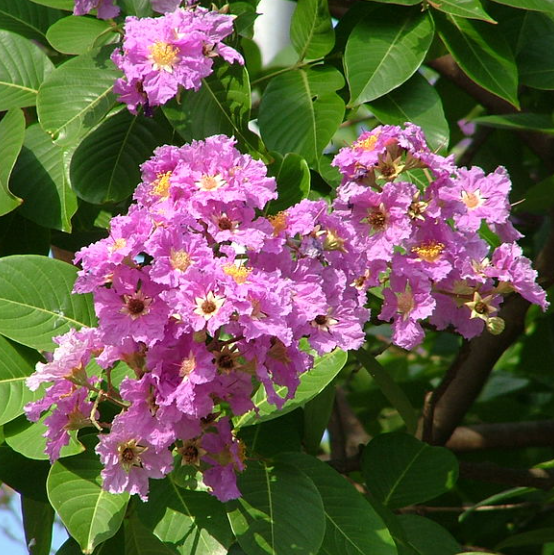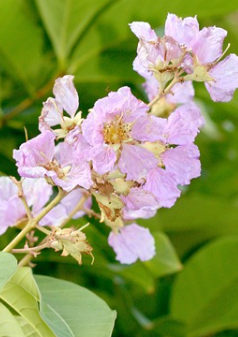Lagerstroemia speciosa
Lagerstroemia speciosa is a stunning flowering tree with violet-pink blooms, valued for its beauty and powerful medicinal benefits in blood sugar control and metabolic support.

Habit
Deciduous Tree
Height
| 20–30 ft (can reach up to 50 ft in native regions) |
Growth
Moderate to Fast
Soil
Well-drained loamy soil
Shade
Full Sun
Moisture
Moderate
Edible
| Yes (leaves used in herbal teas) |
Medicinal
Yes (anti-diabetic, antioxidant, weight loss aid)
Origin
Southeast Asia, Indian Subcontinent
Climatic Condition
Tropical to Subtropical
Temperature (°)
20–38°C
Humidity (%)
50–70%
Potting media
Garden soil + Compost + Sand
Fertilizers
Organic compost + NPK (15:15:15) during flowering
Watering
| Regular watering when young; drought-tolerant when mature |
Plant Weight
| Varies greatly; 2–5 kg when young (sapling in pot) |
Flowering Time
| Late Spring to Early Autumn |
Soil Ph level
6.0–7.5
Water Ph level
6.0–7.0
Soil EC
1.2–2.0 dS/m
Yield Per Plant
| N/A for yield; produces many ornamental flowers |
NPK ratio
15:15:15
life Span
Health Benefits
|
Suggested Grow Media or Potting Mix ?
40% red soil, 30% compost, 20% sand, 10% cocopeat
Suggested Fertigation/Fertilizers
Common Diseases and Remedies
Powdery Mildew, Leaf Spot, Root Rot, Aphids, Scale Insects.
White powdery coating on leaves, Dark brown to black spots with yellow halos on leaves, Wilting with soft, mushy roots, Tiny insects with sticky residue on leaves, Small, waxy insects with sticky residue.
Neem oil, sulfur sprays, Remove and destroy affected leaves, improve air circulation, Improve soil drainage, avoid overwatering, Insecticidal soap, neem oil, Insecticidal soap, neem oil.
Fungicides with myclobutanil, Fungicides with chlorothalonil, Fungicides with mefenoxam, Insecticides with malathion, Insecticides with imidacloprid.

